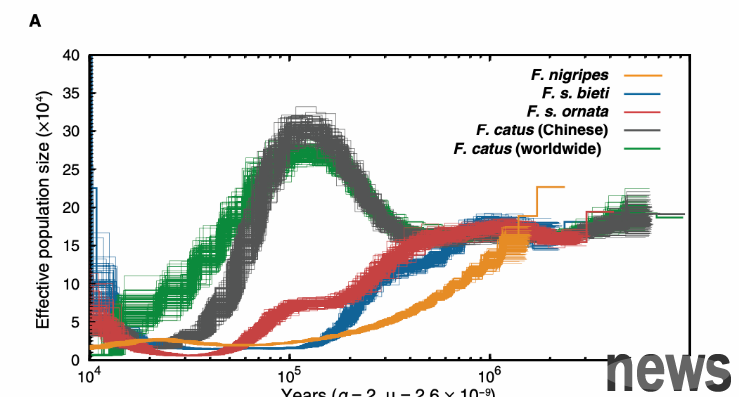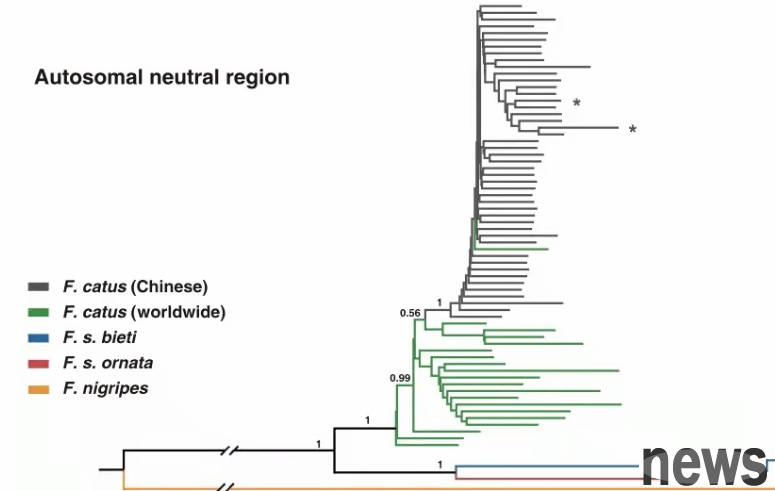Latest research: China’s endemic desert cats should be classified as wild cats and are widely affecting local domestic cats
The cat you are petting probably originated from Africa.
Cats are one of the most common and popular pets in people’s lives. Where did the Chinese domestic cat originate? There are still doubts.

Previous research on domestic cats also lacked coverage of East Asia.
In addition, the taxonomic status of the desert cat on the Qinghai-Tibet Plateau, one of the least known cats and the only cat species in the world endemic to China, has long been controversial. Is it a separate species? Or a subspecies of wild cat?
The Paper (www.thepaper.cn) learned that in the early morning of June 24th, Beijing time, Luo Shujin’s research group and collaborators from the School of Life Sciences of Peking University, the State Key Laboratory of Protein and Plant Gene Research, and the Peking University-Tsinghua Joint Center for Life Sciences published online the latest paper in the international academic journal "Science Advances", which revealed the answer to the above question.

This study collected blood, tissue, hair, feces or museum specimens from 27 desert cats, 4 Asian wild cats and 239 domestic cats from all over China, especially from the domestic cat-desert cat sympatric area, and performed mitochondrial and Y chromosome multi-site sequencing and whole-genome sequencing of 51 individuals.
Researchers found that although China's native wild cats did not participate in the origin of the domestication of Chinese domestic cats, there was recent and extensive genetic penetration between desert cats and sympatric domestic cats.
This secret history and current status of genetic exchange means that whether the domestic cat population on the Qinghai-Tibet Plateau has a hybrid genetic impact on sympatric wild cats is an issue that requires urgent attention; this provides important scientific basis for the protection of rare and endangered wild cats such as desert cats and Asian wild cats.

This study shows that China’s local domestic cats have the same genetic background as the world’s domestic cat populations, which means that domestic cats in East Asia can also be traced back to African wild cats in the Near East or North Africa, thus supporting the single-origin hypothesis of domestic cat domestication in the world.
Genetic and archaeological evidence also shows that domestic cats were domesticated from African wild cats about 10,000 years ago, in the Near East or North Africa, and then spread to all parts of the world.
The genetic evolutionary distance between the desert cat and wild cat subspecies such as the Asian wild cat and the European wild cat is similar. There has been close genetic exchange with the Asian wild cat in history. According to taxonomic principles, the desert cat should be classified as one of the subspecies of the wild cat, and its scientific name is Felis silvestris bieti.
This is a conclusion reached by researchers based on the history of phylogeny, population genetic structure, gene exchange, and population dynamics.




